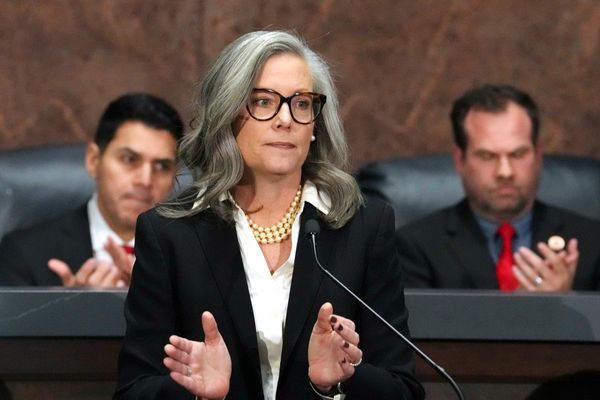/Starbucks%20Corp_%20drive%20thru%20by-%20Sheila%20Fitzgerald%20via%20Shutterstock.jpg)
Curbline Properties (CURB) is a New York-based real estate investment trust (REIT) specializing in convenience real estate in the top affluent suburban sub-markets in the U.S.
On Tuesday, it hit an all-time high of $25.58, up 25% from its first day as a public company. SITE Centers (SITC), its former parent, spun it off on Oct. 1, 2024. It specializes in open-air malls in the country's top markets.
Stocktwits’ Trends with No Friends newsletter brought the REIT to my attention. Curbline has just 12 followers. No wonder I’d never heard of it.
Two things make CURB stock attractive.
First, spinoffs tend to do well. Barchart contributor Jim Osman discussed the topic in an October 2024 article, providing readers with three reasons they deliver for shareholders.
“These forces—focused management, mispricing opportunities, aligned incentives, and the ability to innovate are the reason spinoffs remain a regular source of alpha in investment portfolios,” Osman wrote.
Secondly, with such a small following, any positive news around earnings and property acquisitions should grow the Curbline following, ultimately leading to higher share prices.
However, before recommending CURB stock as a long-term real estate investment, I must compare it to its former parent, SITE Centers.
What Curbline Brings to the Party
The definition of “convenience real estate” is a puzzling one. When first seeing the term, it's easy to assume these are convenience store properties. That’s not the case.
In its documentation to SITE Centers shareholders, Curbline provided this definition:
“Convenience properties are generally positioned on the curbline of well-trafficked intersections and major vehicular corridors, offering excellent access and visibility, dedicated parking and often include drive-thru units … Convenience properties generally consist of a homogenous row of primarily small-shop units leased to a diversified mixture of national and local service and restaurant tenants that cater to daily convenience trips from the growing suburban population,” Curbline wrote in an SEC filing for the spinoff.
The most significant difference between its real estate and its former parent is the size of the overall properties.
According to Curbline’s September 2024 presentation, it had 2.6 million square feet across 78 properties, an average of 33,333 square feet per property. In contrast, the latest property list from SITE Centers shows properties ranging from 44,926 square feet to 1.13 million square feet.
That said, both focus on convenient locations in affluent suburbs in major U.S. markets.
The other big difference is that Curbline’s properties are unanchored, open-air centers. SITE Centers bought its first such property in 2019, capitalizing on large businesses such as Starbucks (SBUX) and Chipotle (CMG) leasing locations at these properties.
I can understand why SITE Centers did the spinoff. The REIT had properties at both ends of the retail spectrum, making it more difficult for investors to evaluate its business. Now, it’s considerably more straightforward.
As of Sept. 30, 2024, according to S&P Global Market Intelligence, Curbline had total revenue of $111.4 million in the trailing 12 months (TTM), double its 2021 revenue, with funds from operations (FFO) of $45.0 million, 26% higher than in 2021, with a 40.4% margin.
On Dec. 19, it announced a special cash dividend of $0.25 per share, payable on Jan. 16. Curbline did a split-year distribution with $0.194388 allocated to 2024 and $0.055612 allocated to 2025.
A REIT must pay out 90% of its annual taxable income to retain its tax-advantaged status. The split-year distribution enables Curbline to meet its regulatory obligations while managing its cash flow.
It’s a win/win for both the REIT and its investors.
SITE Centers Isn’t Half Bad Either
The spinning off of $111 million in revenue and $45 million in FFO will affect its valuation, but only in the near term. The disposition of nearly $2.4 billion in real estate since July 2023 will also affect it.
Approximately $600 million of the proceeds went to funding Curbline as a separate company. A big chunk ($1.3 billion) of the remaining proceeds went to paying down its senior notes. As of Sept. 30, the day before the spinoff, it had $301 million in debt, down from $1.63 billion at the end of 2023.
Between the transfer of 78 properties and cash, Curbline went public with no debt, $1.5 billion in real estate assets, and $600 million in cash on its balance sheet. It can grow its assets from $2.1 billion to between $3.6 billion and $4.1 billion.
It sounds like I’m endorsing Curbline’s business at the expense of SITE Centers, but that’s not the case. The assets left post-spinoff should be expanded multiple times.
After the spinoff, SITE Centers had 8.8 million square feet of real estate across 45 properties, an expected net operating income of $142.6 million in 2024, and a reasonably good 92.6% lease rate.
If you owned 100 shares of SITC stock on Sept. 30, you now also own 200 CURB shares. The issuance of shares was taxable, with CURB valued at $22.29 a share for federal income tax purposes. Approximately 21% of the distribution is a taxable capital gain, while 79% is a return of capital.
So, SITC shares closed Sept. 30 at $11.80. On Oct. 1, you received two shares of CURB. As of Jan. 29, SITC and CURB traded at $15.06 and $24.74, respectively. That’s a pre-gain of $52.74 [(2 x $24.74) + ($15.06 - $11.80) / $11.80], an annualized return of 1,341%.
However, on an after-tax basis, your return would be less. That’s because $9.36 of the gain [2 shares * $22.29 * 21%, taxable] would be taxed as regular income. If you’re in the top tax bracket (37%), your after-tax return would be $49.28 [$52.74 - ($9.36 * 37%)], or 1,253%.
Either way, you’ve done well.
And the Winner Is?
The Curbline spinoff presentation points out that Curbline owns just 78 of the approximately 68,678 convenience assets in the U.S, with 2.6 million in gross leasable area (GLA), a tiny fraction (0.3%) of the total GLA of 952.6 million.
The opportunity in the unanchored convenience market is tremendous. However, it will not be easy for the REIT spinoff to grow its holdings profitably. Interest rates have decreased a little, which should encourage more real estate owners to sell their open-air shopping centers.
While SITE Centers remains a large real estate owner, it did the right thing for its shareholders by spinning off the REIT segment with real growth ahead of it.
I wouldn’t invest heavily in CURB stock because REITs often underperform the broader markets. However, it is a contrarian story worth learning more about.
Who in their right mind would want to own unanchored shopping centers? In the next 12-18 months, we’ll find out, plenty do.







